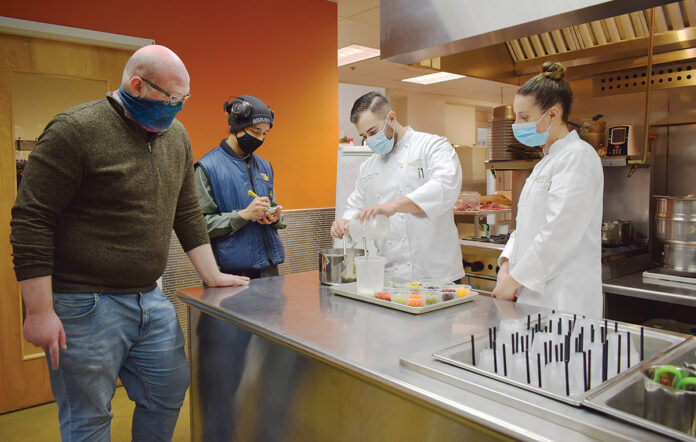
PBN Business Excellence Awards 2020
Excellence in Workforce Development: Blount Fine Foods Corp.
BLOUNT FINE FOODS CORP. realized that with growth comes new opportunities and new demands.
Until about 2000, everyone worked in the Warren plant. But the growth at the Fall River-based fifth-generation family business and gourmet-foods manufacturer has been remarkable.
The company and gourmet-foods manufacturer now employs 1,165 people to help make its soups and 75 varieties of clam chowder.
In 2016, Blount opened a production facility in Texas, now with 350 employees, and, more recently, a facility in Portland, Ore. Between the 2015 and 2019 fiscal years, revenue grew by 85%; sales of nearly $234 million grew to more than $432 million. That growth – including a 246% increase in non-temporary positions over the same period – led to a robust suite of employee training, education and leadership-development programs.
“We were [initially] so small that a [human resources] initiative was part and parcel with family management,” CEO Todd Blount said. “We ran one shift and everyone knew everything.” As Blount moved its headquarters to Fall River, expanded its operations and added employees, management recognized that employee training and development programs had become essential.
“If we didn’t have these programs, little development would happen. We couldn’t rely only on goodwill and management,” Blount said.
One of Blount’s most-effective initiatives is the Leadership Development Program, a two-year program for a small group of high-potential salaried employees. Rotating through three-month assignments in different departments and working with a mentor during the first year, participants experience team-building exercises and community service opportunities, all while doing their full-time jobs.
“We’ve had some big wins. Some business rotations are especially rewarding for the hosting department, which connects their employees to someone in a completely different part of the company,” said Val Ball, Blount’s senior director of corporate human resources. “The ultimate goal is to build the talent pipeline and prepare individuals for when the next opportunity presents itself.”
Program applicants – who are recommended or self-nominated – are interviewed by two executive team members and an HR professional. Blount said that interview process “adds value by demonstrating applicants’ ambition to our senior team.” Four of the first class’s five participants have been promoted. Ten individuals are currently participating in the program.
Salaried employees undergo training for emotional intelligence in their dominance, influence, steadiness and conscientiousness assessment, a personality and behavioral assessment tool. Director-level employees had additional DISC training to better understand their leadership styles. Hourly employees and supervisors also receive specialized training programs. With a desire to promote from within, Blount implemented a skills, education, exploration and development mentoring program for high-potential employees, and a corporate coaching program for manager-level employees.
Promoting from within pays dividends for Blount. More than 30 employees were promoted during the last fiscal year across the Fall River and Warren locations: 15 hourly employees were promoted to salaried positions. Blount reported those internal promotions saved between $75,000 and $100,000 in external recruiting costs.
Blount also recognizes that some training gaps still exist, Ball said. She said the company next year will tackle more ongoing training for supervisors and managers, who directly impact Blount’s hourly employees. Additionally, Bell said Blount is working with its Texas and Oregon locations to expand training and development programs to those employees.
Moving from the company’s traditional bottom-up training approach to a top-down style has paid off. Fifty-one employees now work in human resources, employee training, leadership and development.
“We can’t live without [these initiatives]; we rely on these programs to develop leaders, and we have the employees to develop,” Blount said. “In the past, people weren’t interested in change.”
Asked whether employees ever voiced frustration around so many training obligations, Ball replied, “No, I think it’s the reverse; people desire it. Employees are seeking development opportunities … if we don’t train and develop, we won’t be able to retain them.”
“We build our leaders; we don’t just hire them,” Blount said.











